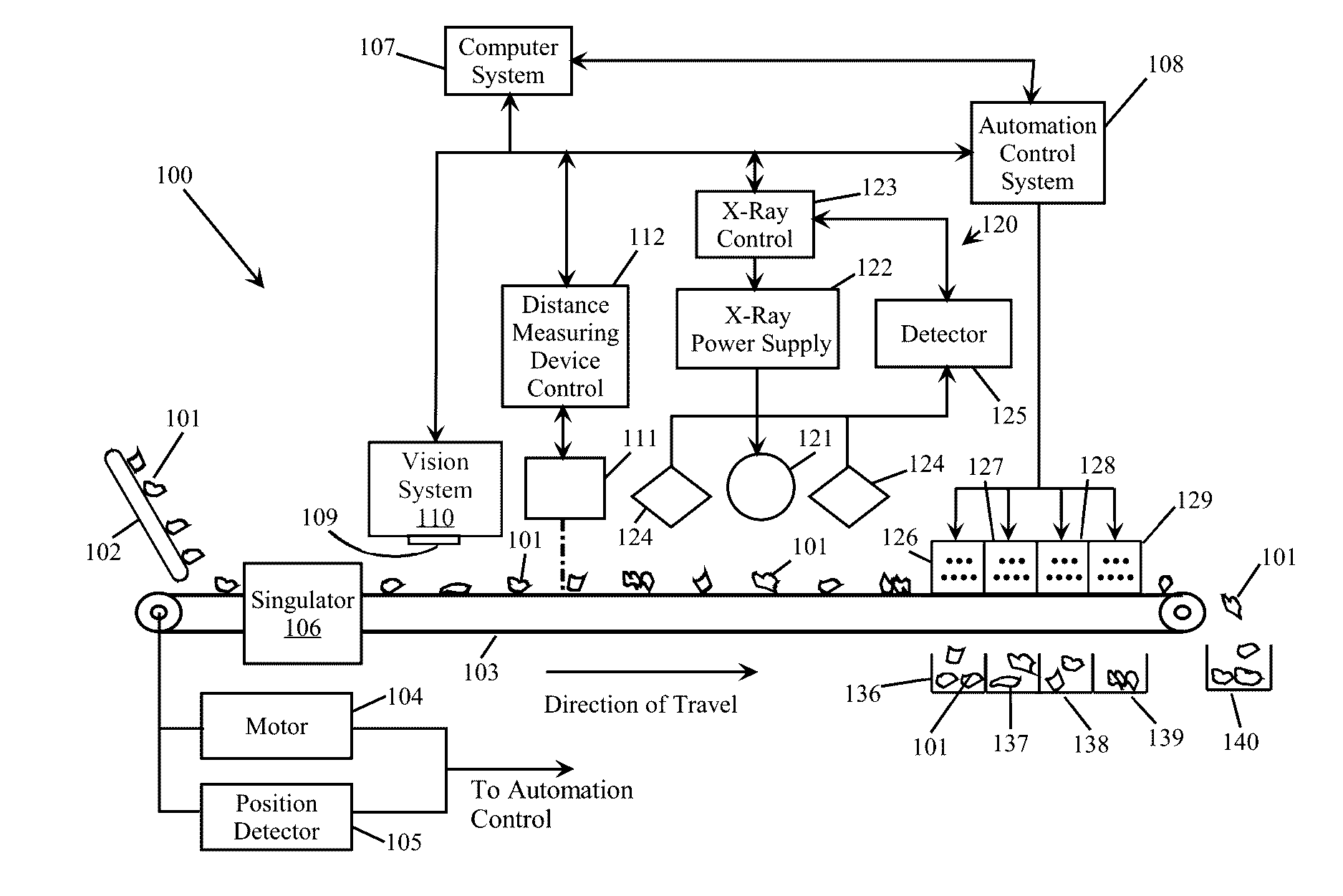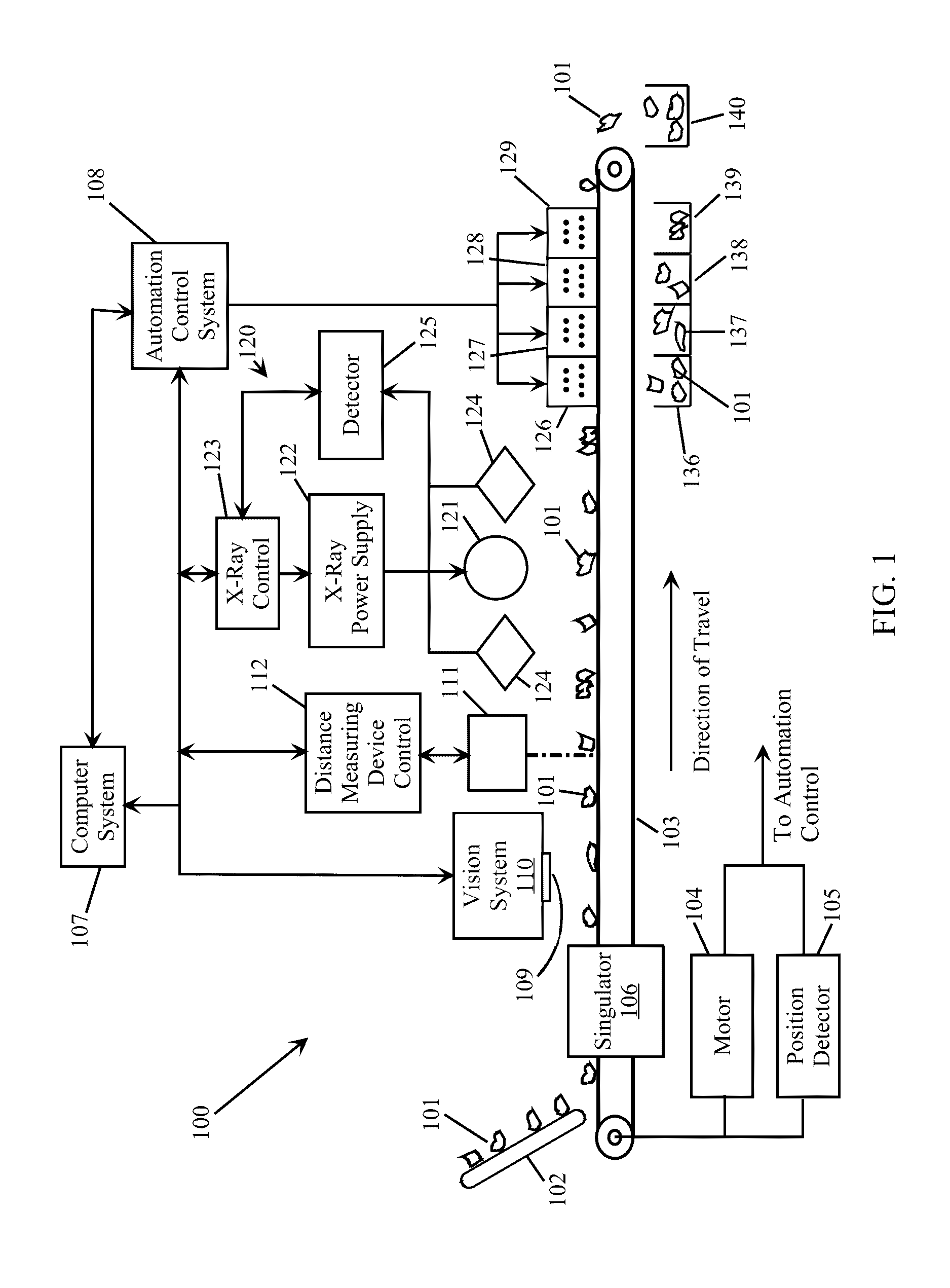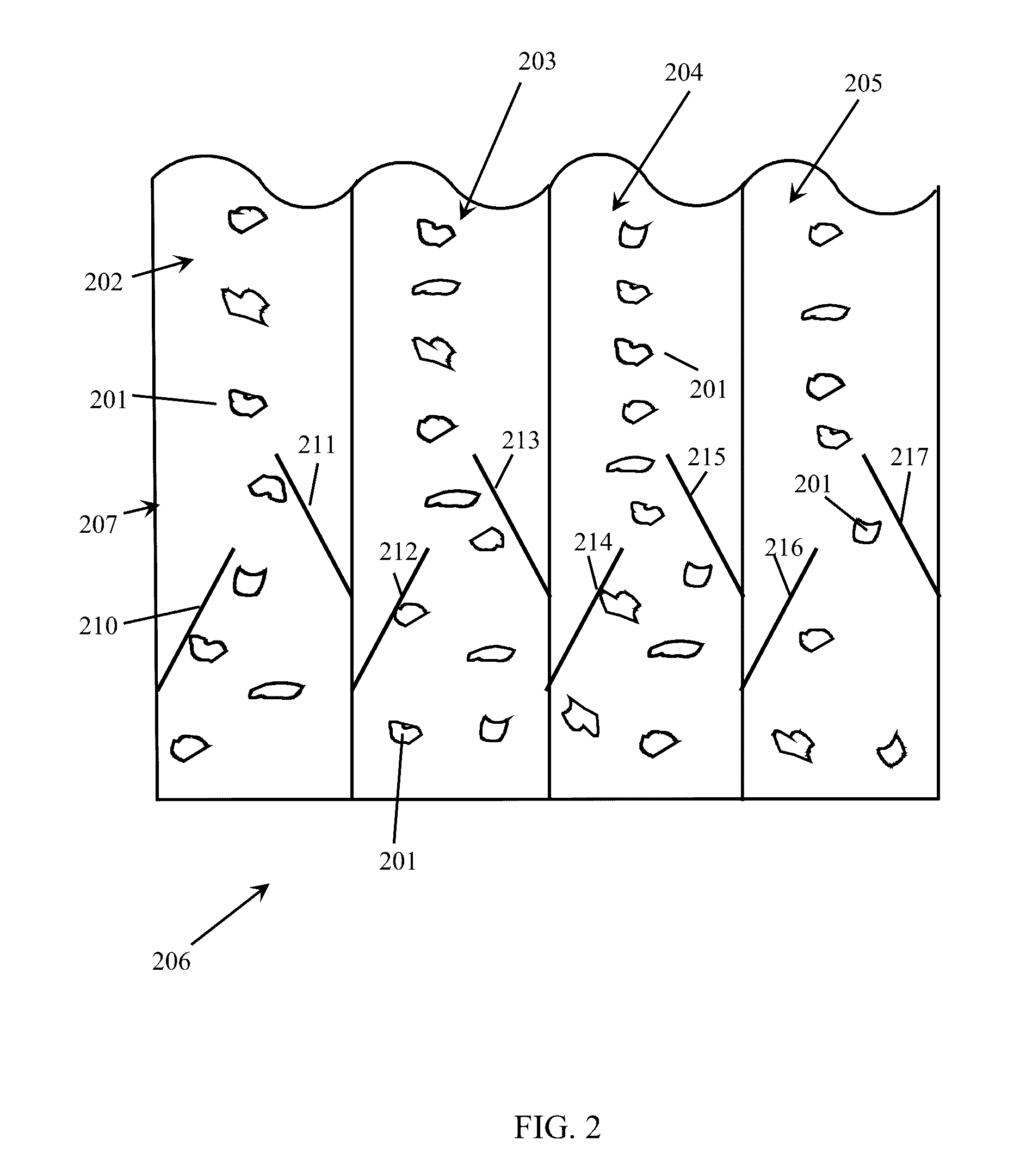Material sorting system
a sorting system and material technology, applied in sorting, measuring devices, instruments, etc., can solve the problems of poor absorption of mixed alloy scrap into high-quality wrought alloys, difficult separability of mixed alloy scrap, limited value of mixed wrought scrap,
- Summary
- Abstract
- Description
- Claims
- Application Information
AI Technical Summary
Benefits of technology
Problems solved by technology
Method used
Image
Examples
Embodiment Construction
[0039]Detailed embodiments of the present invention are disclosed herein. However, it is to be understood that the disclosed embodiments are merely exemplary of the invention, which may embodied in various and alternative forms. The figures are not necessarily to scale; some features may be exaggerated or minimized to show details of particular components. Therefore, specific structural and functional details disclosed herein are not to be interpreted as limiting, but merely as a representative basis for teaching one skilled in the art to variously employ the present invention.
[0040]As used herein, a “material” may be a chemical element, a compound or mixture of chemical elements, or a compound or mixture of a compound or mixture of chemical elements, wherein the complexity of a compound or mixture may range from being simple to complex. Materials may include metals (ferrous and nonferrous), metal alloys, plastics, rubber, glass, ceramics, etc. As used herein, “element” means a chem...
PUM
| Property | Measurement | Unit |
|---|---|---|
| energy | aaaaa | aaaaa |
| atomic numbers | aaaaa | aaaaa |
| voltage | aaaaa | aaaaa |
Abstract
Description
Claims
Application Information
 Login to View More
Login to View More - R&D
- Intellectual Property
- Life Sciences
- Materials
- Tech Scout
- Unparalleled Data Quality
- Higher Quality Content
- 60% Fewer Hallucinations
Browse by: Latest US Patents, China's latest patents, Technical Efficacy Thesaurus, Application Domain, Technology Topic, Popular Technical Reports.
© 2025 PatSnap. All rights reserved.Legal|Privacy policy|Modern Slavery Act Transparency Statement|Sitemap|About US| Contact US: help@patsnap.com



